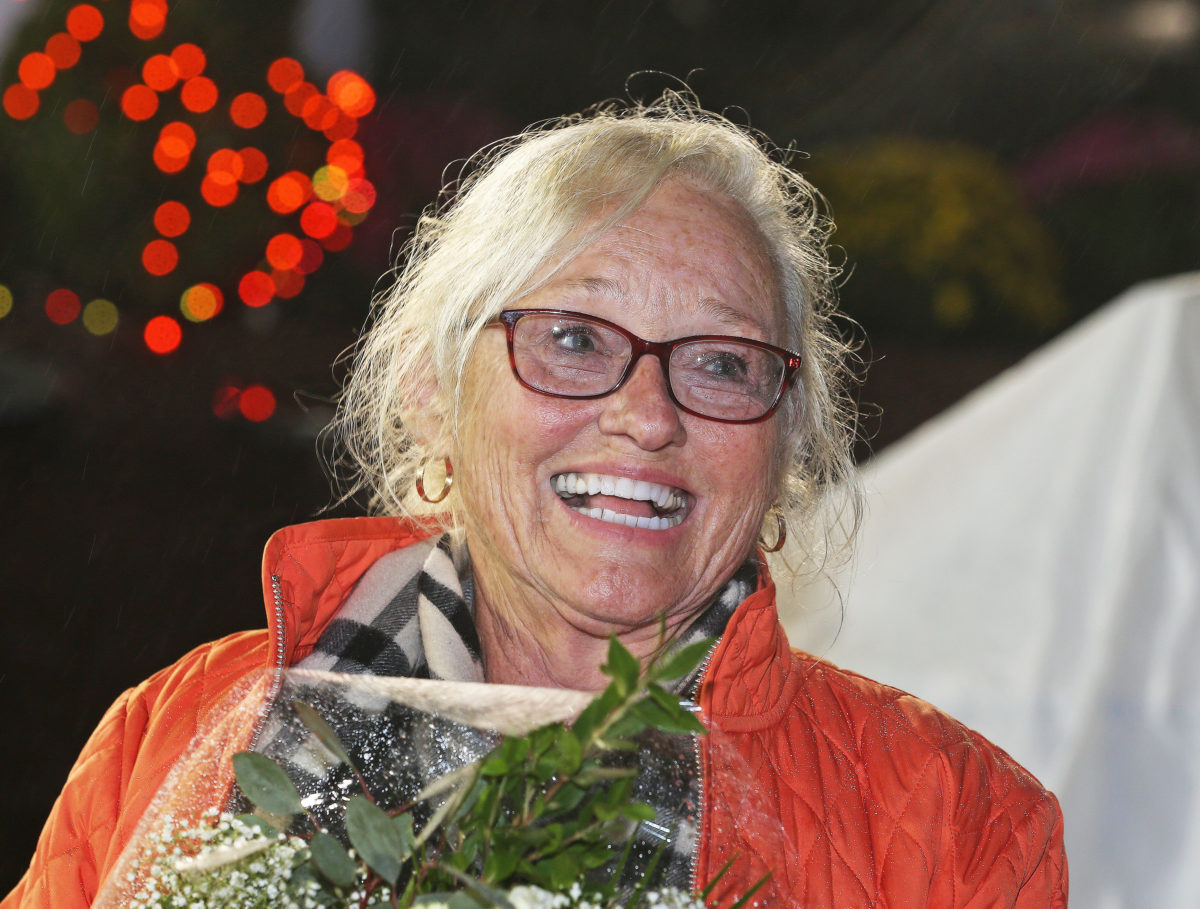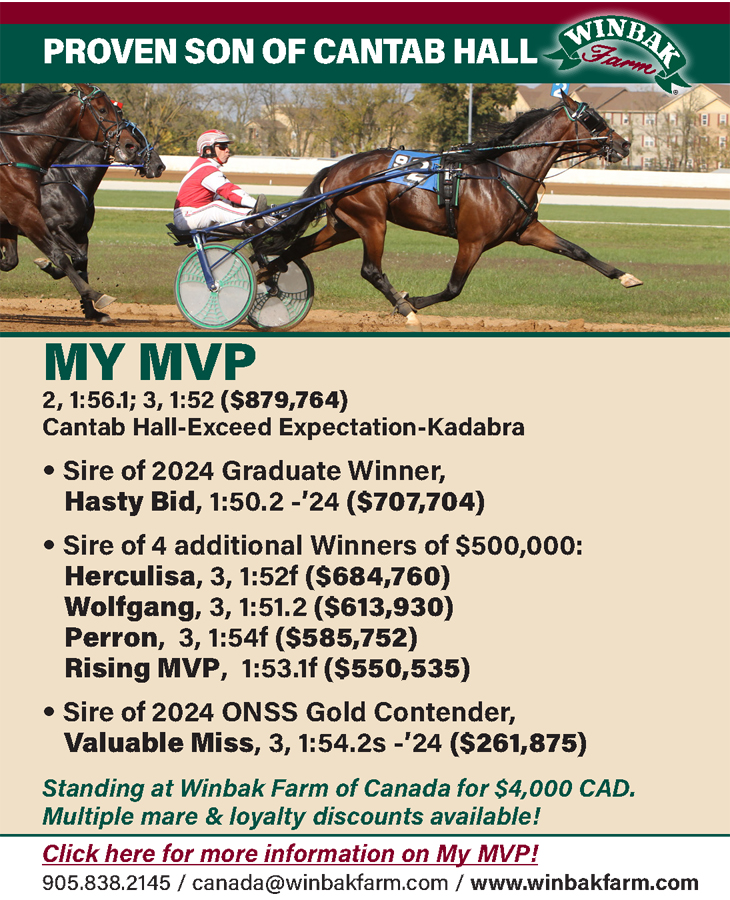
CODE RED for caretakers
THE LACK OF QUALITY HELP CONTINUES
TO BE A PROBLEM PLAGUING THE INDUSTRY.
by Melissa Keith
JoAnn Looney-King made history at Woodbine Mohawk Park. She’s the second female trainer to win the Pepsi North America Cup (2015, Wakizashi Hanover), and frequently brings horses racing for herself and husband Jim King Jr. for Grand Circuit races in Campbellville.
There’s also unpleasant travel history: In 2016, Newborn Sassy was delayed crossing at the USA-Canada border coming home from the Fan Hanover final, in which she finished third to Pure Country. Although the filly was on her trailer for a uncomfortably-long wait in the late June heat, she emerged in good condition, thanks to traveling with knowledgeable help.
Last month, Looney-King vented on social media about “the new generation of caretakers” being unavailable when needed most by horses and trainers. She and groom Kate Moore, also in her ‘70s, were looking after the stable. Looney-King wondered aloud, “Why is this odd?”, then answered her own question: “Because ‘the new generation of caretakers’ don’t give a [crap] and don’t want to learn how to do it right… so we damn well do it ourselves… can we hold out till 80?”
With the stakes season in full swing and the 2022 Breeders Crown taking place at Woodbine Mohawk Park, the need for skilled caretakers is more important than ever. Looney-King told HRU it wasn’t clear where these workers would be found: “Just like everything, the business is changing and whether we like the changes or not, it’s not just us, it’s everything.
“When I paddocked horses, my job for the night was to keep my horse comfortable, take care of my horse. Now one groom will paddock as many as four or five horses in one night, not the way I do things, but everybody does it different and they win races, too. I like my horses in clean stalls and tended to at the track, and most of all kept comfortable and clean, but that’s just me.”
Looney-King agreed that it’s not a career for just anyone.
“Being a caretaker is a great job, but the retirement sucks, the working conditions suck, the hours suck, and you and your horses’ asses are on the line every time you hit the track to perform, so the pressure is always on – and oh, by the way, yes, we like to think family always comes first, but some nights family comes second. Oh yes it does. It’s a tough life and you better be tough or you’ll get eaten alive.”
Racing at Mohawk underscores the groom shortage.
“As for putting horses on the road, yes, it is difficult sending horses on the road especially to Canada,” said Looney-King. “Once again I’m picky. I do not like to send horses on the road to strange barns with strange people. I like to send my own caretakers with their own horses when they go on the road. Then, of course, you are left short at the farm. So we work with that, but we like to know what’s going on when one of our horses is not in our barn, and our people know proper procedures for their own horses.”
On North America Cup night, she was in the Mohawk paddock attending to Lyons Serenity (eighth in the Fan Hanover final) and Lyons Sentinel (fifth in the Roses Are Red final) instead of more glamorous pursuits during the big card.
“I don’t have any great answers to get good caretakers in,” said Looney-King. “It’s a tough business, and caretaking is the hardest and least paying job in it. Good caretakers make good drivers look even better, so yes, we know how very important they are. It’s a dilemma, but like I said everything changes and I guess it will sort itself out, but wow it’s changing so fast…”
In February 2022, the Ontario government announced the introduction of a $2.1-million program to train future caretakers for employment in the equine industry. Up to 250 participants were provided with free training, up to $3,000 to cover expenses, and paid work placements, with employers eligible to receive up to $1,000 per individual hired. Ontario Harness Horse Association (OHHA) president Jim Whelan said his organization worked with Equine Guelph (a not-for-profit education and research centre at the University of Guelph) to develop a curriculum for the Ontario Equine Education and Employment Program (OEEEP).
Whelan agreed with Looney-King’s assessment that good grooms are in short supply. He described the common practice of paying freelance help to paddock and warm up horses on race nights, because regular caretakers are too busy at the farms and training centres. He attributed the groom shortage to urban lifestyles in which people never spend time around horses, as well as the drop in purses/race dates that followed the end of the Ontario’s Slots at Racetracks Program (SARP) in 2012.
“You know, when the industry changed, the quality of the people changed. We’re losing great horsemen all the time,” due to age, but also because of the economic uncertainties of full-time work in racing. As a result, “there’s a desperate need to educate” new caretakers.
While grooms were once able to live inexpensively at racetracks, this is increasingly uncommon, driving even more workers out of the industry.
“The racetracks closed down the backstretches over the cost,” Whelan said. “People living in the dorms at Flamboro and Mohawk and Windsor, when they were closed down, those guys had to find housing elsewhere. Now they’re [working] at training centres and farms, and you need a vehicle…[Some] people had to find other careers.”
Their knowledge and experience was not easy to replace. Whelan reached out to the provincial government with a plan to bring newcomers up to speed, before it was too late. The Ontario Equine Education and Employment Program (OEEEP) was the result.
“I presented it as for the whole equine industry in Ontario, and that’s hunter-jumper, dressage, draft horses–whatever,” he told HRU. “There’s an absolute vacancy, a huge vacancy, for people who have any knowledge of the horse… It’s not just cleaning a stall or jogging horses. Maybe you would have to get on a machine to help out, drag the track, condition the track… So you need to know how to operate vehicles, but you need to know how to operate them safely around animals… We want to professionalize the industry, raise the standards.
“We have 180 that are in the program as participants. We contracted with Equine Guelph and we elected to do the [preliminary] training online; [students] can do it in less than six weeks, if they like. So that gives them the basic training on health and safety issues for humans and horses, and all the basics.”
Participants are placed with an industry employer for the next six to 12 weeks, added Whelan. “And then if the trainer or farm manager [finds] that they like the quality of help, they can
hire them full time.” The OEEEP continues through October 31, 2022, with the possibility of renewal next year. (More details at www.ohha.ca/get-involved/)
With fewer North Americans growing up around horses today than in Whelan’s’ youth, he noted the need to educate future caretakers has acquired greater urgency. “You get people that come from the city, or from anywhere. We have a lot of immigrants in this country that have never been around horses up close. So they literally, if you tell them to get a halter and put it on, they wouldn’t know whether to put it on the tail or the head. I’m not exaggerating.”













